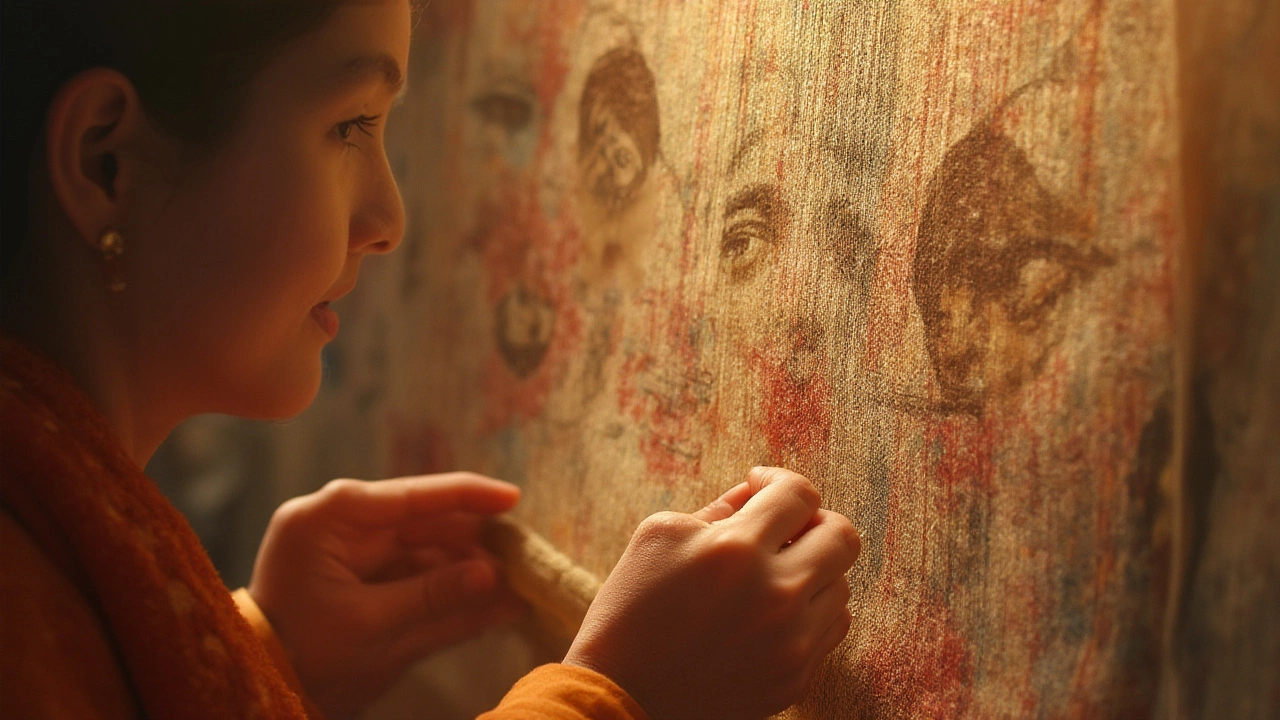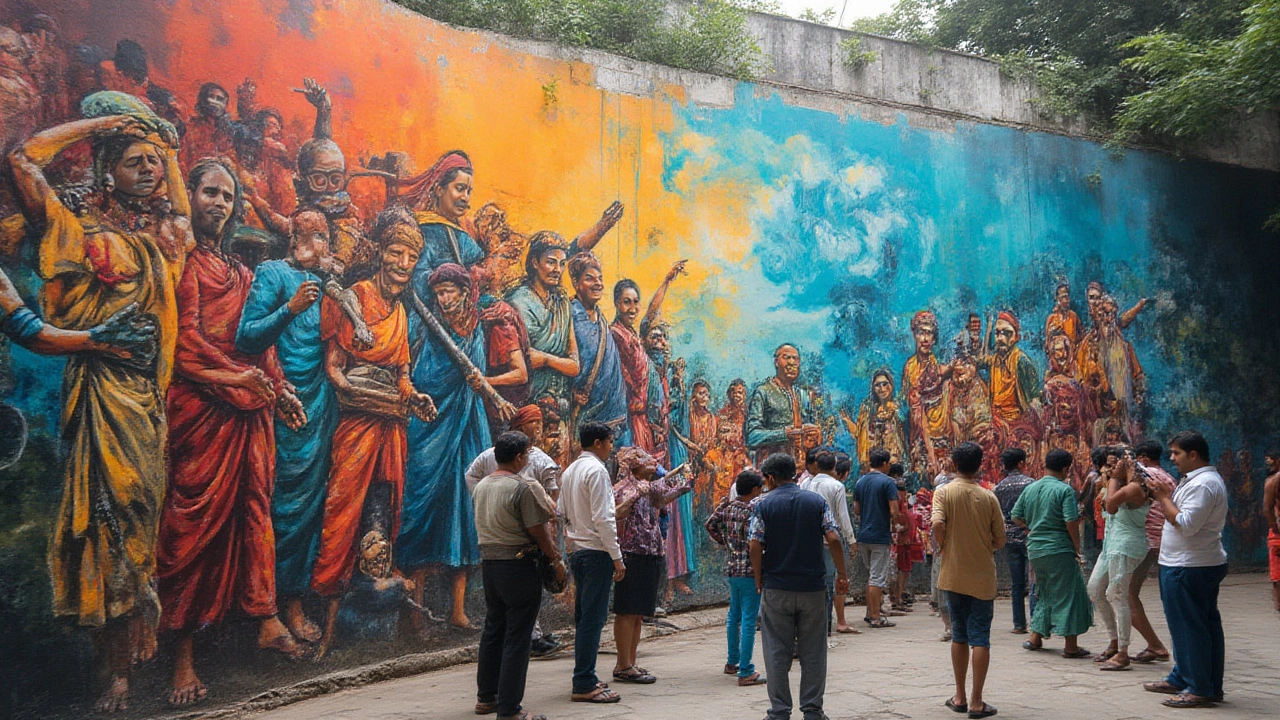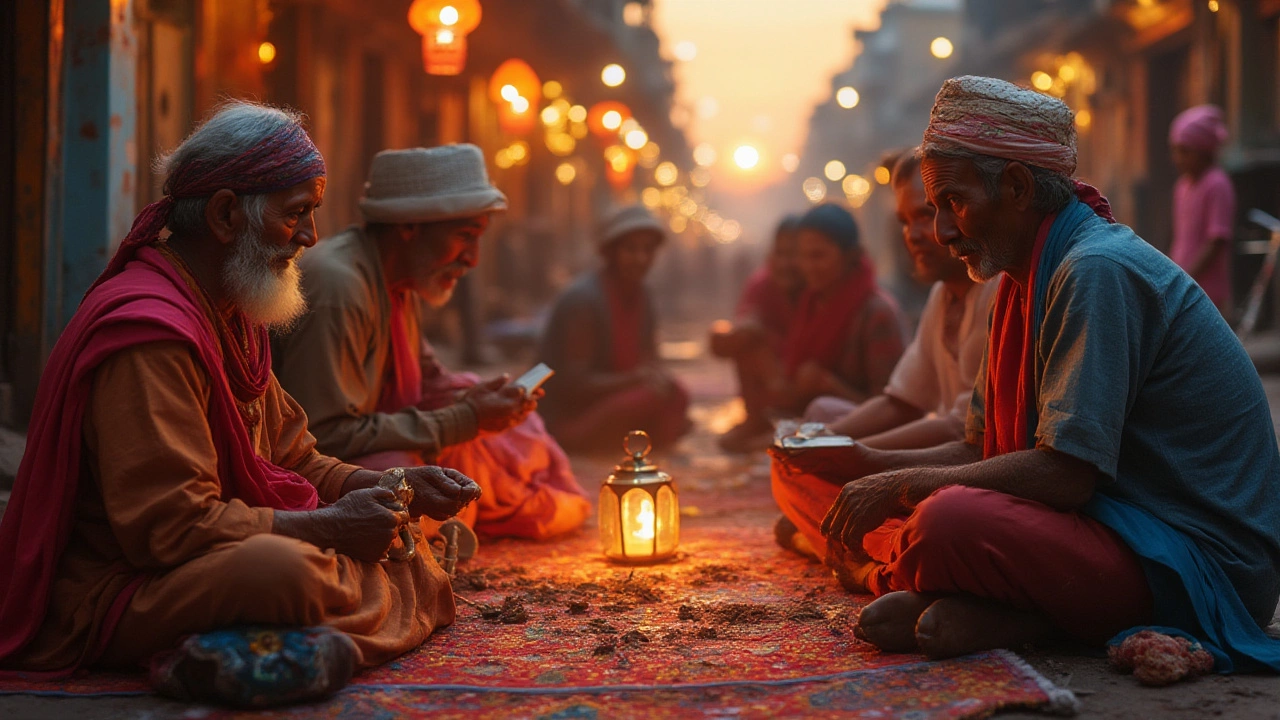People rarely agree on much these days, but here’s something most can’t escape: the stories we tell are the glue holding groups together. It’s wild to think whole countries, tribes, or even dog lovers in Sydney (Oscar would approve) wake each morning inside invisible webs of shared tales—what experts call cultural narratives. These are not bedtime stories or gossip over coffee. They are the powerful threads spun into the fabric of who’s “us,” who’s “them,” what’s possible, and why life looks a certain way. The meaning of cultural narrative is not buried in dense books or academic chats. It’s humming in street art, footy chants, family recipes, blockbuster films, and the dreams teenagers scribble into journals or TikToks. If you think this sounds abstract, think again. Cultural narratives influence how people vote, who they trust, what they protest, and why a simple tattoo or slang word can spark pride or outrage. Ready to see what really drives our choices, conflicts, and even our sense of home? You’ll never see your daily routine—or your favourite old story—the same way.
What Makes a Cultural Narrative?
Let’s break it down. A cultural narrative is a shared, unfolding story about a group’s past, present, and future. It answers questions like, “Who are we?” “What matters most?” and “How should we act?” For some cultures, the story is handed down around kitchen tables: recipes, rituals, strict rules, and legends of ancestry. In others, it’s blasted through TV, newsfeeds, and memes. Think about how Australians joke about “mateship,” or the British talk about their stiff upper lip. These are not just quirks—they’re part of their core stories.
The glue holding these stories together comes from repetition. Over time, families, schools, media, and neighbours reinforce the same ideas, so they feel obvious—like social background music. It’s not all sunshine and fairy tales, either. Cultural narratives teach pride, yes, but sometimes guilt, suspicion, or shame. Australia’s own narrative struggles are famous: the country’s identity being pulled between ancient Aboriginal stories, post-colonial pride, and the reality of multicultural cities. Every year on January 26, there’s heated debate over Australia Day—should it mark unity or a painful invasion? That’s a clash of narratives in real time, fighting for space in the nation’s head and heart.
What separates cultural narrative from simple tradition? It’s the collective belief that the story explains why things are the way they are—and why they must stay that way (or change). Sociologists say these narratives form through “sensemaking”—a fancy word for how groups turn random events into meaningful patterns. For example, when a country faces an economic crash, the news, politicians, and everyday folks quickly spin stories explaining who’s to blame or what’s needed to recover. In tough times, stories about resilience or hard work often get louder. When you pause to listen, the narrative is everywhere. Even the family “black sheep” who gets mentioned at Christmas, or the buzz around a footy game, shows how certain stories are fixed points. That’s the real “meaning” of a cultural narrative: a bundle of beliefs, linked to identity, repeated so often that they start to feel like facts—even when they’re not.
Consider the classic Australian bush hero—a figure made legendary in Banjo Paterson’s ballads. The rugged, resourceful rebel struggling against authority. This doesn’t just shape local book clubs; it frames how Aussies see themselves, their politics, and even their humour. Why does a certain joke land in Sydney but flop in London? That’s cultural narrative in action. Some researchers suggest that humans are “storytelling animals”—we crave explanations that are simple but sticky, and rarely question the origin. If you’ve ever wondered how an old wives’ tale or a childhood tale keeps resurfacing in new ads, that’s the work of cultural narrative running quietly under the hood.

How Cultural Narratives Shape Identity and Worldview
If you want to see a cultural narrative’s true power, watch what happens when someone tries to challenge it. Disagreement isn’t just debate; it feels personal, like someone is poking at the core of who you are. This is because narratives aren’t dusty old tales—people tie their sense of self to them. What clothes you wear, what language you speak, whether you call your sausage “snag” or “bratwurst”—these are daily acts of narrative. When migrants arrive in a new country, they must decide which stories to carry forward and when to adapt.
Cultural narratives are the engine behind group loyalty, moral outrage, and even everyday kindnesses. Why do Paris locals insist on greeting each other with “bonjour” before ordering coffee? Their story says respect starts with acknowledgment. Why do Americans put such value on personal freedom? Their founding story is about breaking away from control. This isn’t random. The stories are planted early, through school lessons, heroes, holidays, and sometimes in what’s left unsaid.
Let’s talk data. A 2023 Pew Research survey showed 84% of people worldwide say feeling connected to their country’s culture is “very important” to their personal identity. But there’s a twist: younger generations are more likely to challenge older narratives, especially around gender roles, climate change, and national history. That’s why you see culture wars over statues, school curriculums, or song lyrics—it’s not just noise, but a struggle to set the dominant story.
Think about sporting myths. Why does Australia rally behind the “battler” in sport and politics? Why do Italians revere family tables and the art of pasta-making? Or why do so many Americans root for the underdog? These patterns don’t appear out of thin air. They’re cemented by cultural narrative—often unconsciously, from parents, news, or even movies. That’s also why changing cultural narratives is hard work. If you try to rewrite the family script or push for new national holidays, you’re not just proposing change; you’re asking people to see themselves differently.
On a personal level, cultural narratives often show up in surprising places. At my local dog park in Sydney, I’ve noticed Oscar—the dog—gets petted more by certain people, depending on their comfort with dogs (or maybe his clumsy charm). One guy once explained, “Where I’m from, dogs belong outside, not inside the house.” Another said, “Back home, dogs protect, not play.” They weren’t just sharing pet tips—they were telling micro-narratives about place, memory, and belonging. That’s how deep this goes.
Here’s another fact: in education, embracing students’ cultural narratives can boost classroom engagement by 20%, according to a University of Melbourne study. When teachers let students share stories from their backgrounds and connect lessons to those worlds, learning sticks. So cultural narrative isn’t just societal wallpaper; it’s the stuff educators, marketers, and even therapists use when they want to reach (or persuade) people.
Check out this quick table breaking down major ways cultural narratives influence everyday life:
| Area of Life | Example of Cultural Narrative | Common Impact |
|---|---|---|
| Food | “We always eat together as a family” | Shapes eating habits, reinforces family bonds |
| Language | “Real men don’t cry” | Impacts emotional expression, mental health talking |
| Holiday | “Independence Day is freedom day” | Forges national unity, sometimes excludes dissent |
| Sport | “Underdogs have heart” | Dictates rooting habits, symbol of resilience |
| Work | “Climb the ladder yourself” | Frames ambition, work-life balance |
You see, these are not small things. Cultural narrative is how children learn what to fear, what to laugh at, who to trust, and what’s worth fighting for. And it moves with the times. Think about the radical shifts in narratives around mental health, environmental care, or gender in just a handful of decades—what was taboo or hidden is now celebrated or openly discussed, once the stories change. The speed and reach of these changes are turbocharged by tech, social media, and global migration, so the battle over cultural narrative is more intense now than ever before.

Why Understanding Cultural Narrative Matters Today
Ignoring cultural narrative is like ignoring the current in the surf—the waves might look random, but they’re shaped by something deeper. There’s a reason brands pay top dollar for focus groups before launching ads, or why politicians road-test slogans before rolling out campaigns. They want to tap into—or rewrite—the dominant stories inside a culture’s head. When the story fits, people listen. When it jars, the backlash is quick. Remember when a global fast food chain tried to sell a meat pie in Sydney with “exotic” ingredients? Social media roasted them for messing with the national comfort food. That’s narrative gatekeeping, Aussie-style.
If you’re wondering how you can spot or even shift cultural narratives, here are some tips that work whether you’re navigating a workplace, classroom, neighbourhood, or just trying to understand your own quirks:
- Cultural narrative often hides in “That’s just how it’s done”—question these lines. Whose story is being protected?
- Try “cultural listening.” That’s paying close attention to which stories get repeated and celebrated (on TV, in ceremonies, even memes), and which get sidelined or dismissed.
- History and context matter. Deep dive into how certain narratives started. For example, why does Sydney celebrate the Harbour Bridge’s construction so fiercely? Turns out, in the 1930s it was proof of thriving despite the global Depression.
- Ask yourself, “Who benefits from this story? Who loses?” Controversial? Maybe, but always revealing.
- When talking with others (or raising kids), add: “Where did you first hear that?” It sparks reflection and cracks open the shell of automatic thinking.
Just because a story is old doesn’t mean it’s wrong. But if a group’s old story is hurting people or flirting with stereotypes, it pays to ask who’s writing the next chapter. In Australia alone, the rapid rise of multicultural festival days, new language programs, and even First Nations storytelling in parliament shows narratives can be updated—sometimes quietly, sometimes with fireworks. That’s why so many books, podcasts, and films break records by daring to show unseen threads or tell stories “from the margins.” There’s an appetite for stories that better match reality—less myth, more lived truth.
For the future, experts predict cultural narratives will keep getting remixed faster. Technology makes it easy for new voices to challenge or champion old stories. But the basics don’t change: if you wonder why your neighbour puts pineapple on pizza (blasphemy to some!), or why debates over climate action get heated fast, check what narratives are being played out beneath the surface.
In today’s world—where identity politics, global migration, and digital culture collide—paying attention to cultural narrative is a secret weapon. It’ll help you understand conflict, connect with strangers, or just dodge a storytelling blunder at a barbecue. In the end, realizing how much of daily life runs on stories means you get to choose: repeat the old ones, or be brave enough to try telling a better tale. Oscar’s opinion? Every good story deserves a warm spot under the table—and maybe a treat at the end.

